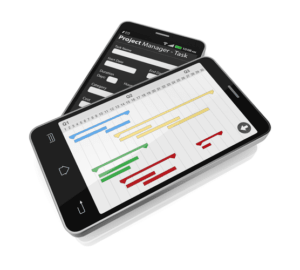
By capitalizing these costs in progress, companies can more accurately reflect the value of the project and its impact on the financial statements. However, unlike other fixed assets, CIP does not undergo depreciation until the construction is complete, and the asset is put into use. The first step in construction in progress accounting is to record all expenses related to the construction project. This includes the cost cip accounting of materials, labor, equipment, and any overhead expenses. Once the project is completed, transfer the total CIP balance to the appropriate fixed asset account.
How does CIP impact financial forecasting?

It’s an ideal solution for companies looking to optimize their financial management. Imagine Business a plans to expand its office building to accommodate more employees. Their accountant initiates a Construction-in-Progress Office Accounting for Churches Expansion asset account to document construction expenses.

Why Is Construction-in-Progress Accounting Necessary?
- Once the project is completed, transfer the total CIP balance to the appropriate fixed asset account.
- These challenges can result in financial inaccuracies that disrupt project timelines or budgets.
- Strict adherence to GAAP requires meticulous documentation and accounting principles.
- CIP is used for fixed-asset construction projects, such as buildings or infrastructure, while WIP tracks costs for operational projects or production processes, such as manufacturing.
- Recording these expenses as assets creates a complete record of capital investment throughout the project.
- Construction-in-progress accounting plays a vital role in tracking expenses for projects still in development.
- Understanding CIP accounting is essential for project managers, accountants, and stakeholders to make informed decisions and maintain financial health throughout the project’s lifecycle.
Our goal is to empower businesses with the financial insights they need to thrive. Hiring a fractional CFO allows startups to access high-level financial expertise cash flow without the cost of a full-time executive. This flexibility enables businesses to scale efficiently while receiving tailored financial strategies.
Effective CIP Accounting for Modern Construction Projects

Construction-in-progress (CIP) accounting is the process accountants use to track the costs related to fixed-asset construction. Because construction projects necessitate a wide range of prices, CIP accounts keep construction assets separate from the rest of a company’s balance sheet until the project is complete. The purpose of capitalizing assets in progress, commonly referred to as CIP, is to accurately reflect the costs and value of long-term projects in the financial statements. By categorizing and tracking these costs separately, businesses can better assess the financial impact of ongoing projects and make informed decisions.

CIP accounting in construction presents unique challenges, but effective strategies can ensure accurate financial reporting. This method keeps the CIP account balanced and accurately reflects total project costs. Once the asset is fully executed, the construction in progress account will be credited, and the debit will be transferred to the property, plant, and equipment. Below, we’ll show you an example of what the recording may look like for a company.
CIP is classified as an asset rather than an expense, representing the company’s investment in ongoing projects. This classification separates CIP from operating expenses, highlighting financial commitments toward incomplete projects. Since construction projects are often multi-phase and lengthy, CIP accounting monitors these costs as assets, simplifying capital investment tracking. When a project is complete, the cumulative CIP balance transfers to a fixed asset account, and depreciation begins. Once a construction project is finished, the costs in the CIP account move to a fixed asset account. This step helps with financial reporting, updating how these costs are perceived and managed.
Challenges in CIP Accounting
It is an accounting term used to represent all the costs incurred in building a fixed asset. Construction in progress, or most commonly known as CIP, is a fixed asset account with a natural debit balance. However, it is important to consider the potential drawbacks of capitalizing assets in progress. For example, if a company is constructing a new office building, all related costs—such as architectural fees, materials, and labor—are recorded under the CIP account.
Accounting For Construction In Progress – Explained
Moreover, auditors often scrutinize construction-work-in-progress accounts due to their susceptibility to manipulation. Companies might be tempted to delay transferring costs from these accounts to other asset categories, thereby artificially inflating profits. This practice, however, distorts financial reports by misrepresenting the true profitability of the company. Our knowledgeable team has decades of experience managing construction company accounts, and you can feel confident that we will navigate your company’s specific situation with care and expertise.

 English
English